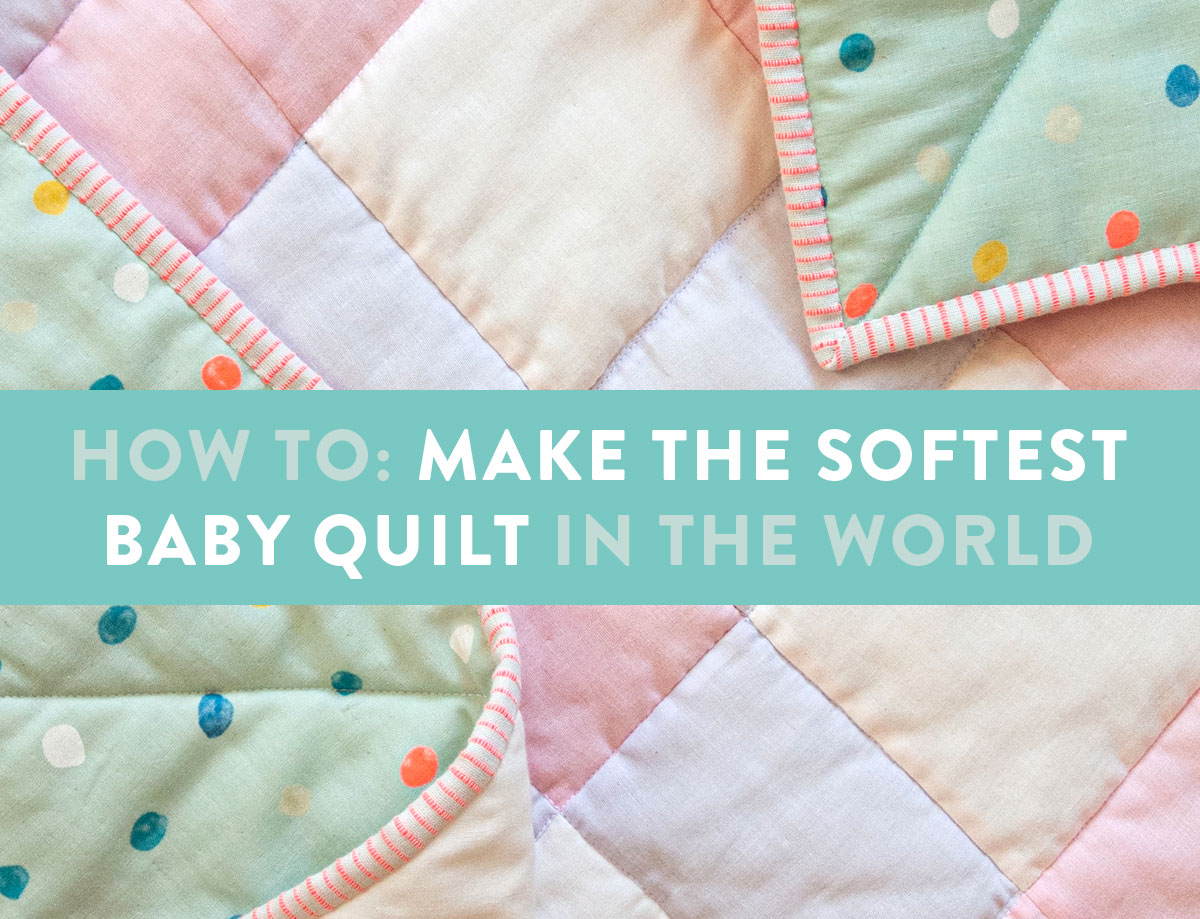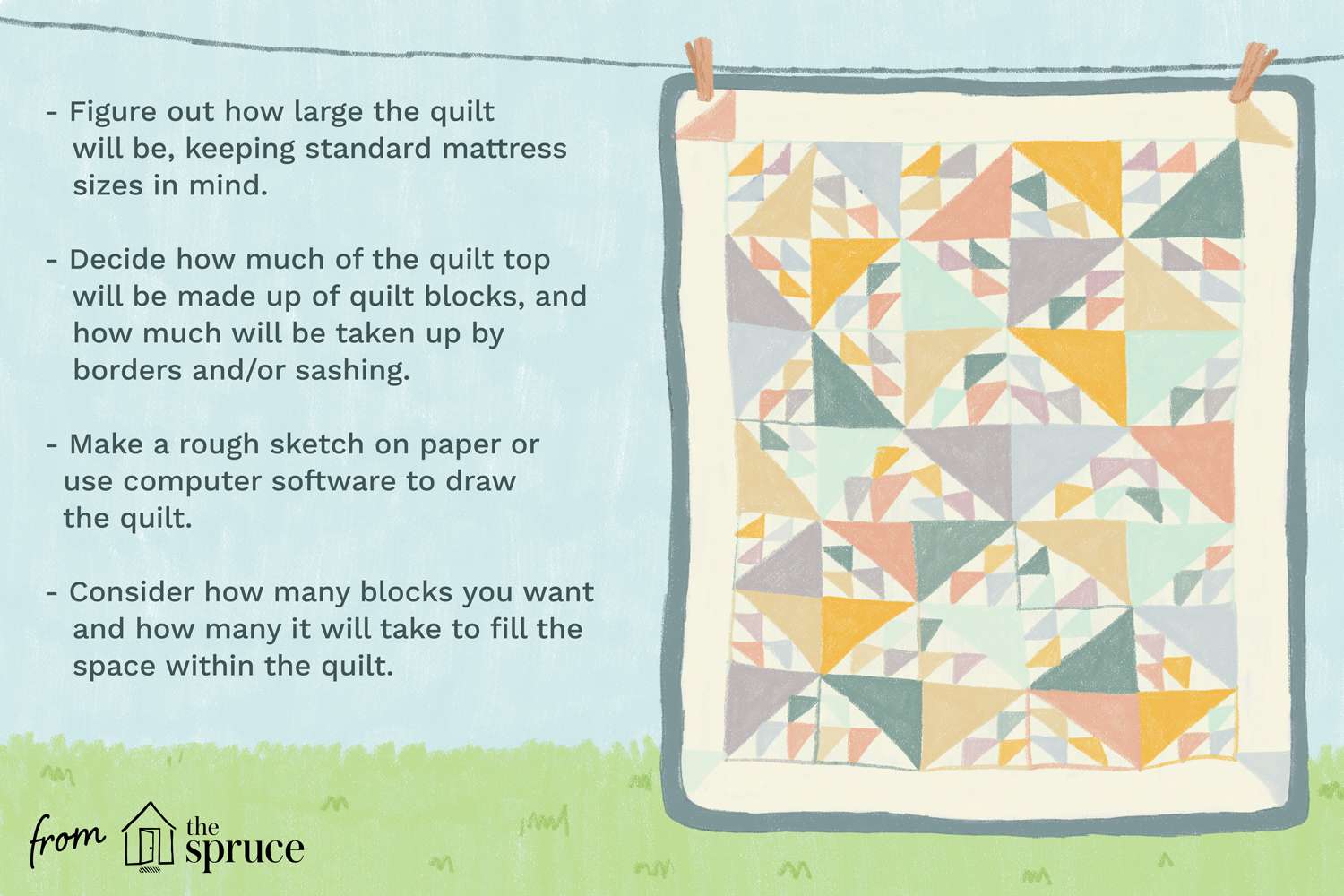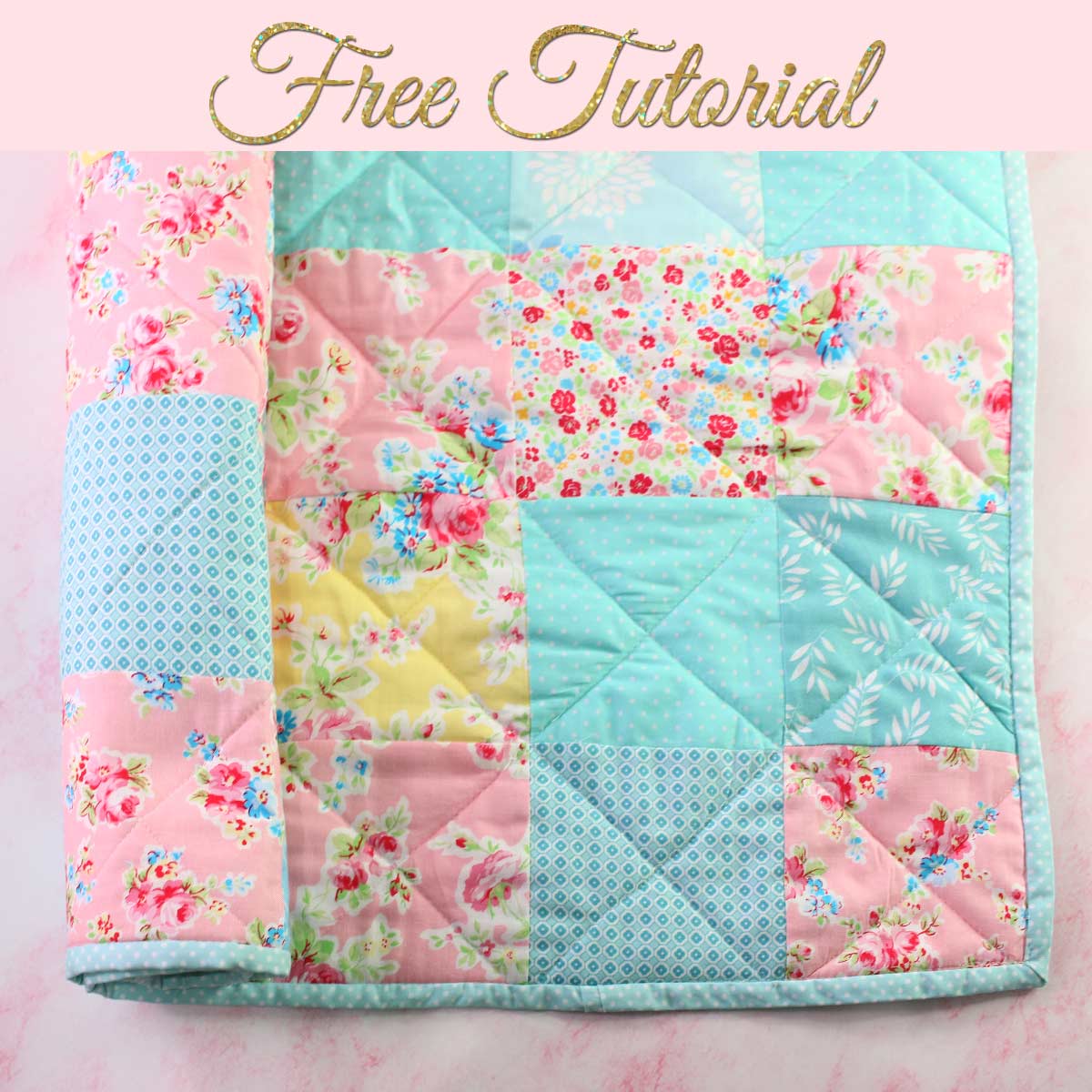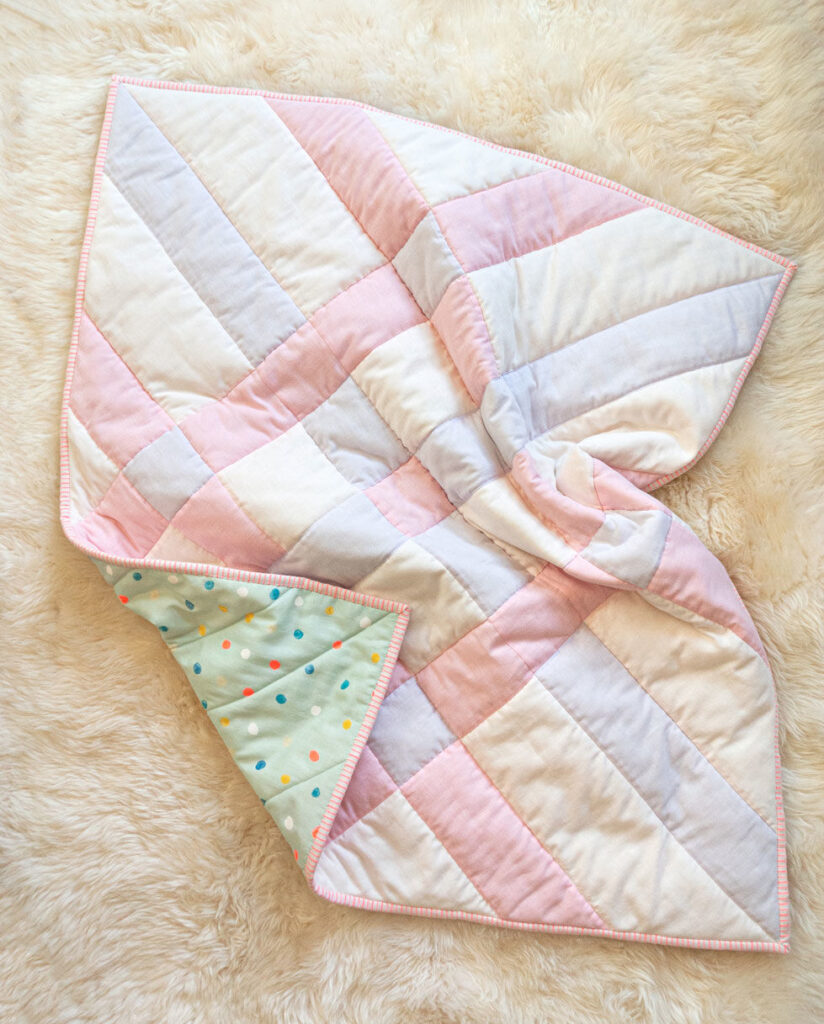If you’re looking for a comprehensive guide on how much fabric you need for a baby quilt, you’ve come to the right place. In this article, we’ll cover all the details you need to know when it comes to determining how much fabric you need for your baby quilt. We’ll provide tips on how to measure your fabric correctly, what type of fabric to use, and how to calculate the yardage needed. With this information in hand, you’ll be able to create a beautiful, cozy quilt for your little one that will last for years to come.
Choosing the Right Fabric for a Baby Quilt

When making a baby quilt, you will need to choose the right fabric for the project. The fabric you choose will depend on the intended use, the size of the quilt, and the colors you want to use. If you are making a quilt for a newborn, you will want to choose softer fabrics, while larger quilts may require more durable materials.
Types of Fabric
When choosing fabric for a baby quilt, you should consider how much fabric you will need and the types of fabric you would like to use. For example, if you are making a quilt for a crib, you may want to use flannel, muslin, cotton, or fleece. You will also want to consider the colors and patterns you will use, as these can affect the overall look of the quilt.
Fabric Care
When it comes to caring for a baby quilt, you will want to make sure that the fabric is not too watery. For this reason, you should avoid washing the fabric in hot water or using harsh detergents. If the fabric is too watery, it may cause the quilt to become misshapen. Additionally, you should always check the care instructions on the fabric before washing to ensure that the fabric will not shrink or fade.
When figuring out how many squares to make for a crib quilt, you should consider the size of the quilt, the type of fabric you are using, and the desired pattern. Depending on the size of the quilt, you may need to purchase extra fabric to make sure you have enough for the project. By taking the time to choose the right fabric for your baby quilt, you can create a beautiful quilt that will last for years.
Calculating the Amount of Fabric Needed for a Baby Quilt

Crib Quilt with 3 Squares
To make a crib quilt with 3 squares, you will need approximately 9.5 yards of fabric. All squares should measure at least 36 inches. How to choose baby quilt squares – you may opt for different colors, patterns, and prints.
Crib Quilt with 5 Inch Squares
To make a crib quilt with 5 inch squares, you will need around 5.5 yards of fabric. All squares should measure at least 25 inches. How to choose baby quilt squares – you may opt for any combination of colors, patterns, and prints.
Baby Quilts of Other Sizes
The amount of fabric needed for baby quilts of other sizes depends on the size of the quilt and the size of the squares. Generally, the larger the quilt you wish to make, the more fabric you will need. How to choose baby quilt squares – you may opt for any combination of colors, patterns, and prints.
What Size to Cut a Baby Quilt

Crib Quilt with 3 Squares
For a crib quilt with three squares, the fabric size required will be based on the size of the quilt. Generally, you will need a total of six 10-inch squares of fabric, three for the top and three for the bottom.
Crib Quilt with 5 Inch Squares
For a crib quilt with five-inch squares, you will need six 8-inch squares of fabric for the top and six 8-inch squares for the bottom.
Baby Quilts of Other Sizes
For other sizes of baby quilts, the size of fabric required will depend on the size of the quilt. Generally, you will need two pieces of fabric for the top, two for the bottom, and two for the backing. The size of each piece of fabric should be the same as the size of the quilt.
When cutting fabric for a baby quilt, be sure to add a ¼-inch seam allowance to each piece of fabric. This will ensure that your quilt is the correct size when finished.
How to Make a Baby Quilt
Crib Quilt with 3 Squares
Fabric Requirements: To make a crib-sized quilt (approx. 38″ x 51″) with 3 squares measuring 12″ each, you will need 1 yard of each of 3 fabrics, plus 1/8 yard of fabric for binding.
Crib Quilt with 5 Inch Squares
Fabric Requirements: To make a crib-sized quilt (approx. 38″ x 51″) with 5 inch squares, you will need 2 yards of the main fabric and 1/4 yard of fabric for each of the 4 accent fabrics. Additionally, you will need 1/2 yard of fabric for backing, 1/8 yard of fabric for the binding, and 1/4 yard of fabric for the border.
Baby Quilts of Other Sizes
Fabric Requirements: For baby quilts of other sizes, the fabric requirements will vary. To make a quilt with 12 inch squares, for example, you will need 1/2 yard of each of 4 fabrics, plus 1/2 yard of fabric for the backing, 1/8 yard of fabric for the binding, and 1/4 yard of fabric for the border.
No matter the size of the quilt, it is important to consider the fabric requirements and plan accordingly when making a baby quilt. By taking the time to purchase the appropriate amount of fabric, you can ensure that your quilt is just the way you want it.
Frequently Asked Questions
What type of fabric is best for a baby quilt?
Cotton is the best choice for baby quilts as it is breathable, soft, and lightweight. Flannel is also a popular choice as it is extra soft and warm. Avoid fabrics that are delicate, have a high luster, or are easily frayed, as these can be uncomfortable for a baby’s delicate skin.
What Size Should the Quilt Be?
The size of a quilt depends on the size of the bed it is intended for, as well as the desired look and drape. For a newborn baby, the quilt should be approximately 36 inches by 54 inches. For a toddler bed, a quilt should be approximately 48 inches by 60 inches. For a twin bed, a quilt should be approximately 66 inches by 86 inches. For a full/queen bed, a quilt should be approximately 90 inches by 96 inches. For a king bed, a quilt should be approximately 108 inches by 96 inches.
Is it necessary to use batting or a backing layer?
- Batting: It is advisable to use batting when making a baby quilt. This will give the quilt extra warmth and comfort. Batting also adds volume and makes the quilt more durable.
- Backing Layer: A backing layer is also important for a baby quilt. It helps to keep the batting from shifting and adds additional strength and durability to the quilt. It also provides an extra layer of warmth.
Both batting and a backing layer are essential for making a warm, comfortable and long-lasting baby quilt.
Are There Any Special Considerations for a Baby Quilt?
Safety is paramount when making a baby quilt. Choose fabrics which are soft, non-toxic and gentle on the skin. Consider using cotton or bamboo fabrics as they are more lightweight and breathable than other materials. Also, opt for fabrics which are non-allergenic and free from any chemicals or dyes. When stitching, use a thread which is strong and won’t break easily, but also soft enough not to irritate the baby. Additionally, choose a batting which is lightweight and won’t make the quilt too thick or uncomfortable.
Are There Any Machine Quilting Techniques Suitable for a Baby Quilt?
The quilting techniques suitable for a baby quilt must be gentle and durable. Machine quilting is a great choice, as it offers a variety of quilting patterns and designs that are both visually appealing and easy to work with. Popular machine quilting techniques include straight-line quilting, echo quilting, and stippling. Since baby quilts are usually made with lightweight fabrics, it is important to use a light-weight batting to make the quilt comfortable and safe for the baby.
Conclusion
Fabric requirements for a baby quilt depend on the size of the quilt, the size of the blocks, and the amount of fabric needed for the quilt top and binding. Planning ahead and being aware of fabric requirements is key to ensuring you have enough fabric for the project. With a bit of careful planning, you can create a beautiful and meaningful baby quilt.






